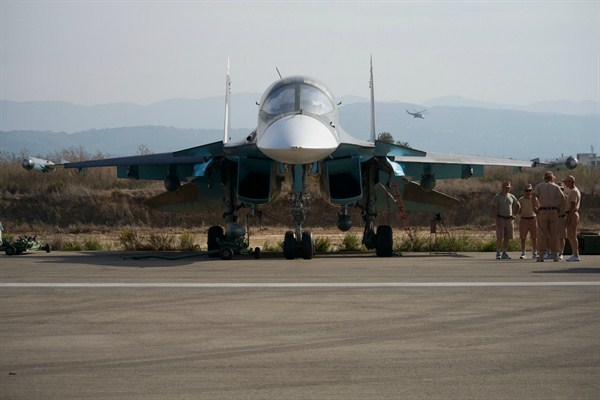As Russian warplanes continue to attack targets in Syria, the apparent decisiveness of Moscow’s actions, at least in the view of some observers, has obscured an important reality: the poor readiness of Russia’s accident-prone military, which could increase the risk of an error with significant political or military consequences. The United States and Russia have been engaged in so-called deconfliction talks to prevent accidental contact or clashes between American and Russian jets in the skies above Syria. But as a reportedly errant cruise missile strike in the early days of Russia’s intervention showed, along with Russian planes consistently breaching Turkish air space last month, the success of any such coordination is predicated on Russia carrying out controlled operations with no unexpected incidents. Recent Russian military history shows that this is unlikely.
Under President Vladimir Putin, Moscow has been engaged in a decade-long military modernization program that was catalyzed by Russia’s disastrous wars in Chechnya and intensified following the Russian military’s embarrassingly poor performance in the 2008 Russo-Georgian War. This program has succeeded in partially rebuilding the armed forces from the depths of their post-Soviet decay in the 1990s. However, Russia’s military continues to experience a high rate of equipment failures, malfunctions and accidents related to years of underinvestment in technology, maintenance and training. These issues, compounded by the combination of overuse and inexperience, significantly raise the chances of a serious mishap as Russian forces maintain an ambitious operational tempo in Syria. Meanwhile, on the ground, Syrian civilians bear the brunt of Russian imprecision, with estimates that Russia’s month-long bombing campaign has killed more civilians than militants from the self-proclaimed Islamic State.
Prior to the Syrian intervention, Russia’s air force was already experiencing significant operational difficulties related to overuse. As Moscow stepped up its campaign of aerial brinkmanship around the Baltics, the Scandinavian states, the United Kingdom, Japan and Alaska, the Russian air force was literally “falling out of the sky.” Six Russian planes have crashed since June, after Russian air sorties over Europe and the Pacific increased to levels last seen during the Cold War. The spate of crashes, attributed by experts to increased stress on aging airframes and the poor quality of replacement parts, led the Russian air force to ground its entire fleet of TU-95 bombers and SU-24 fighters over the summer.

